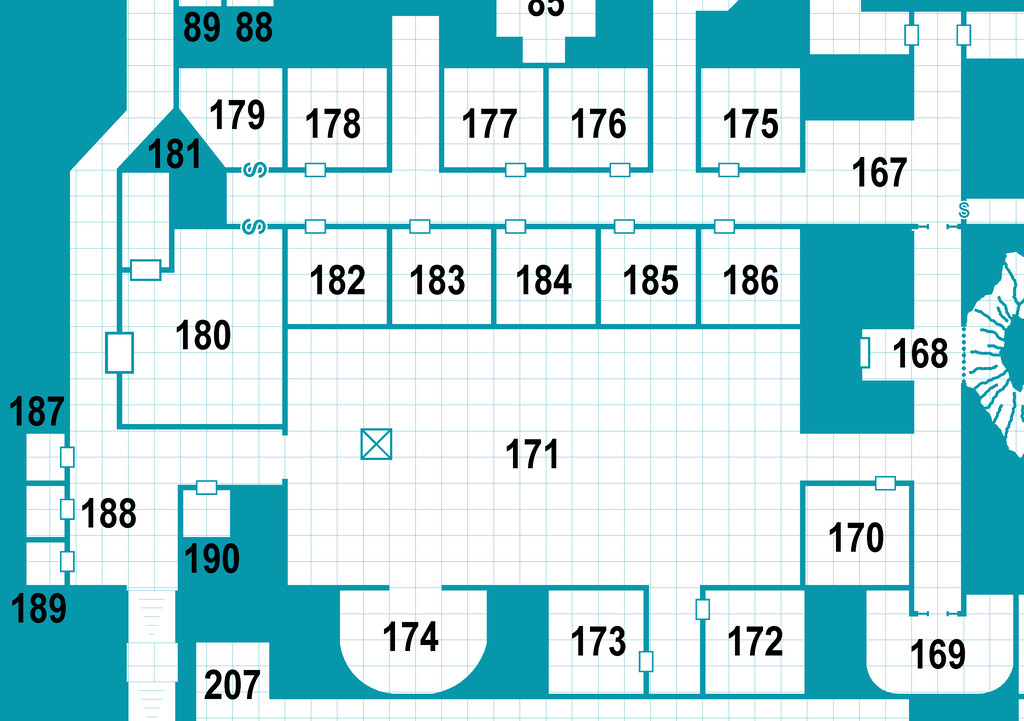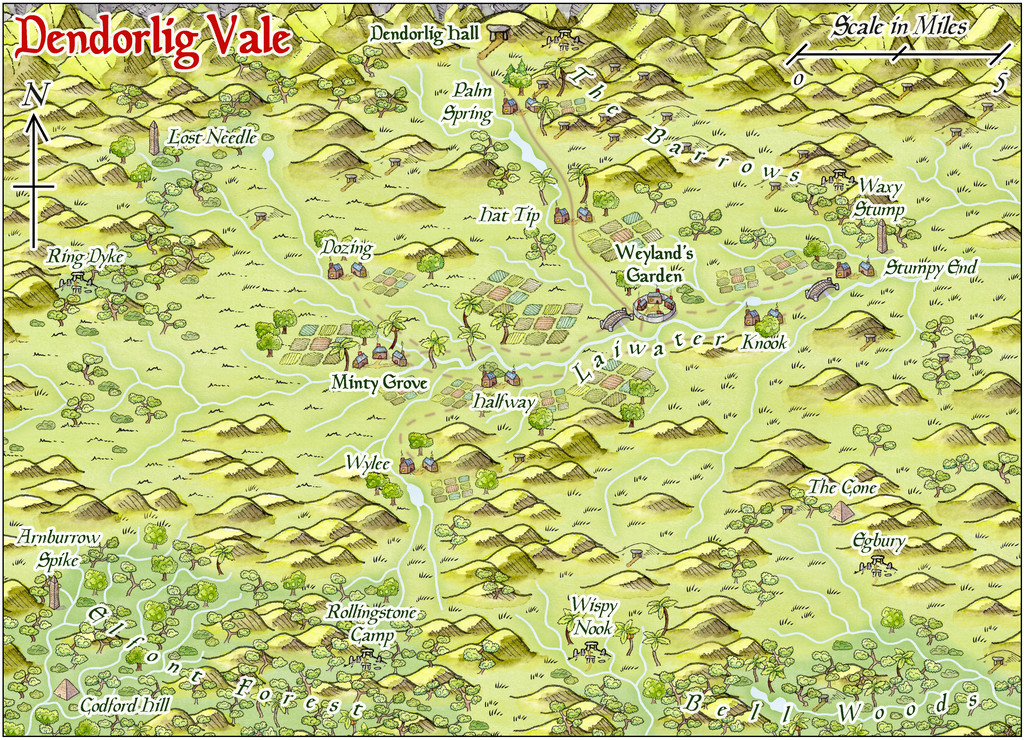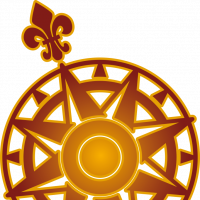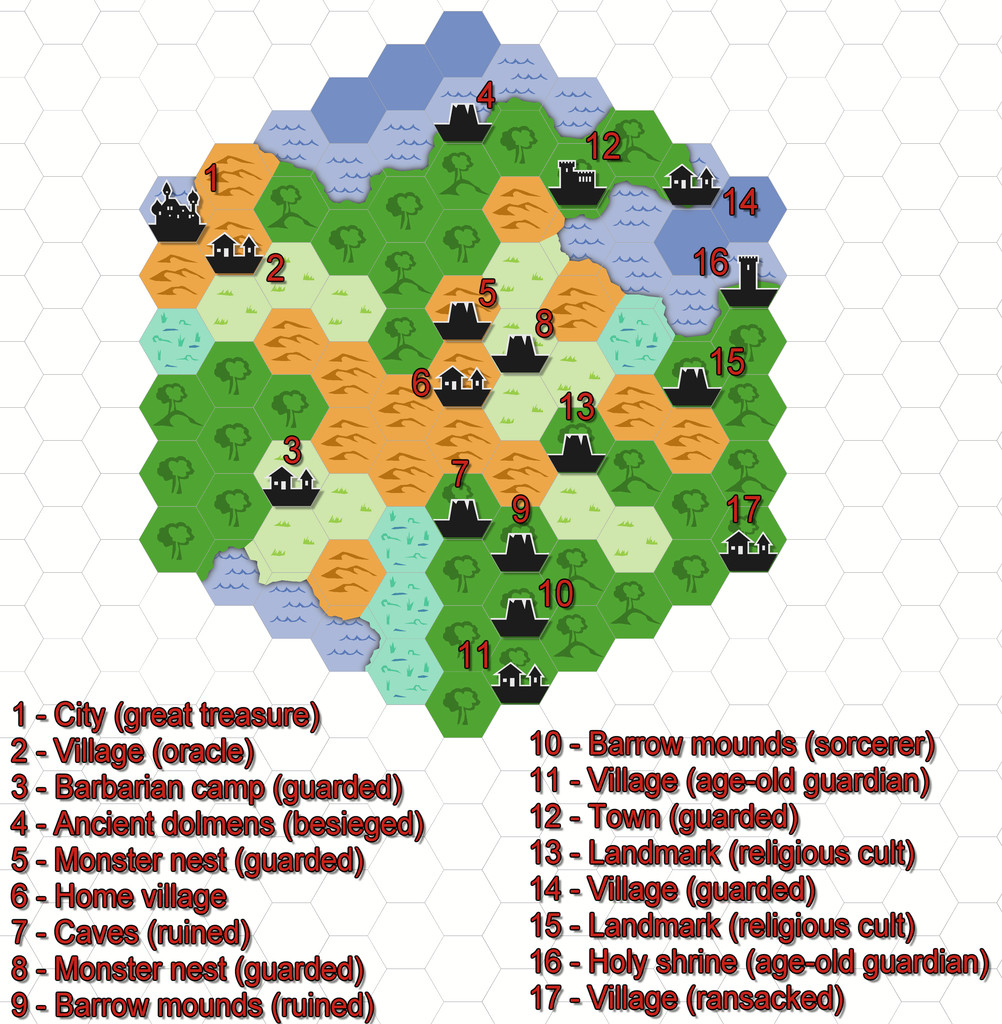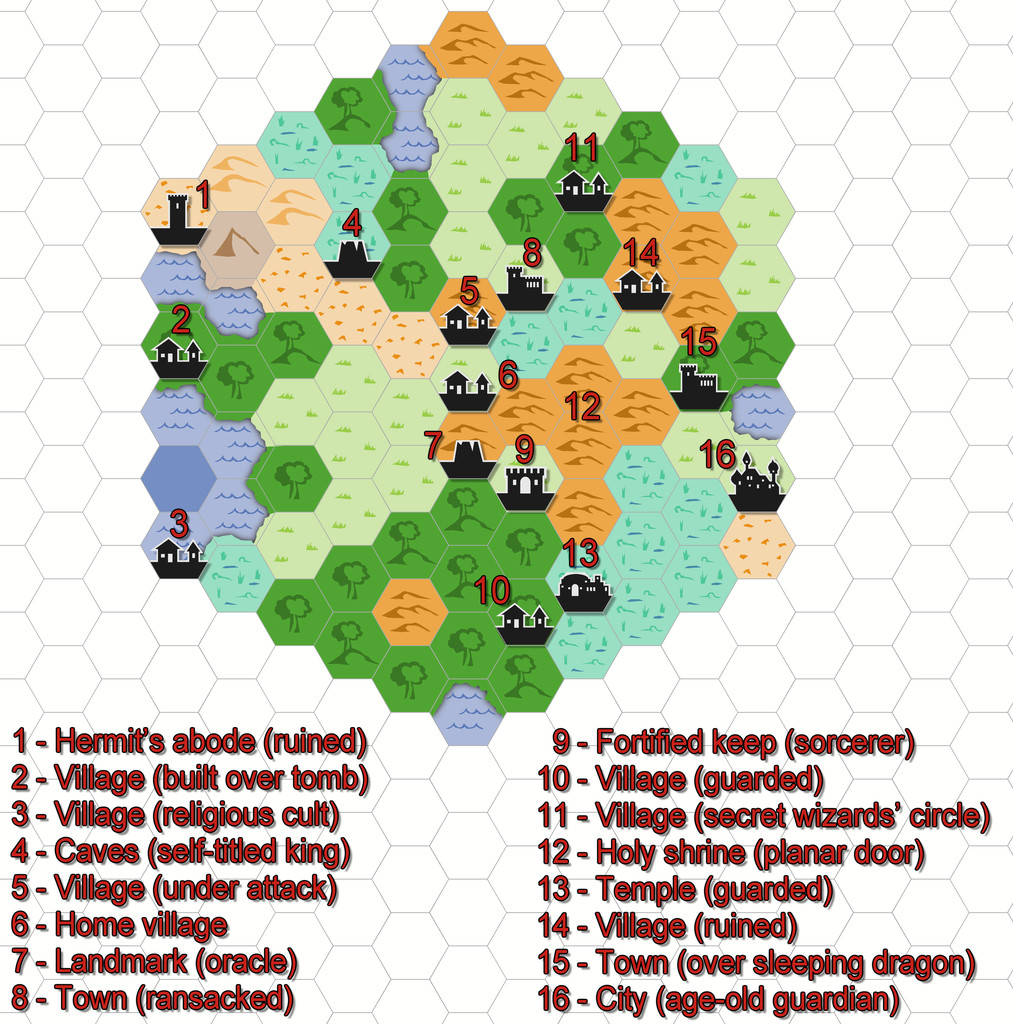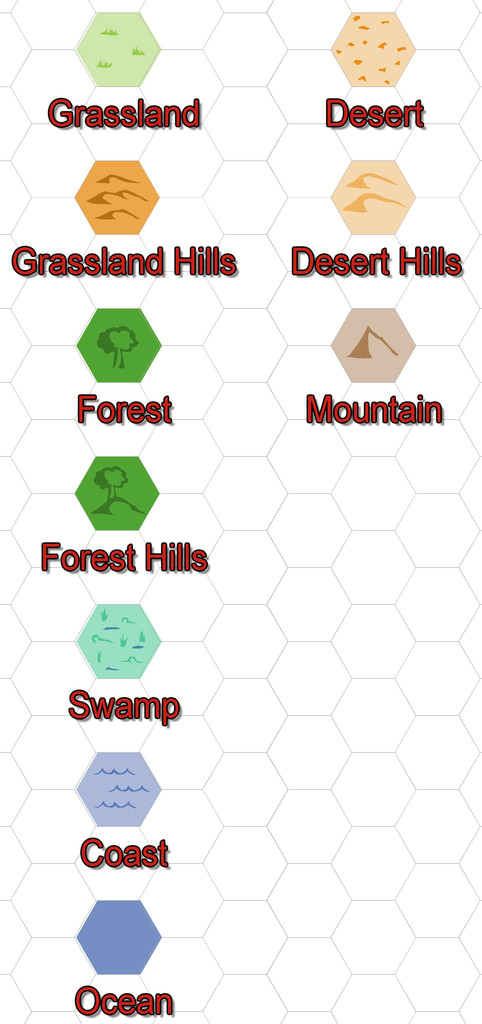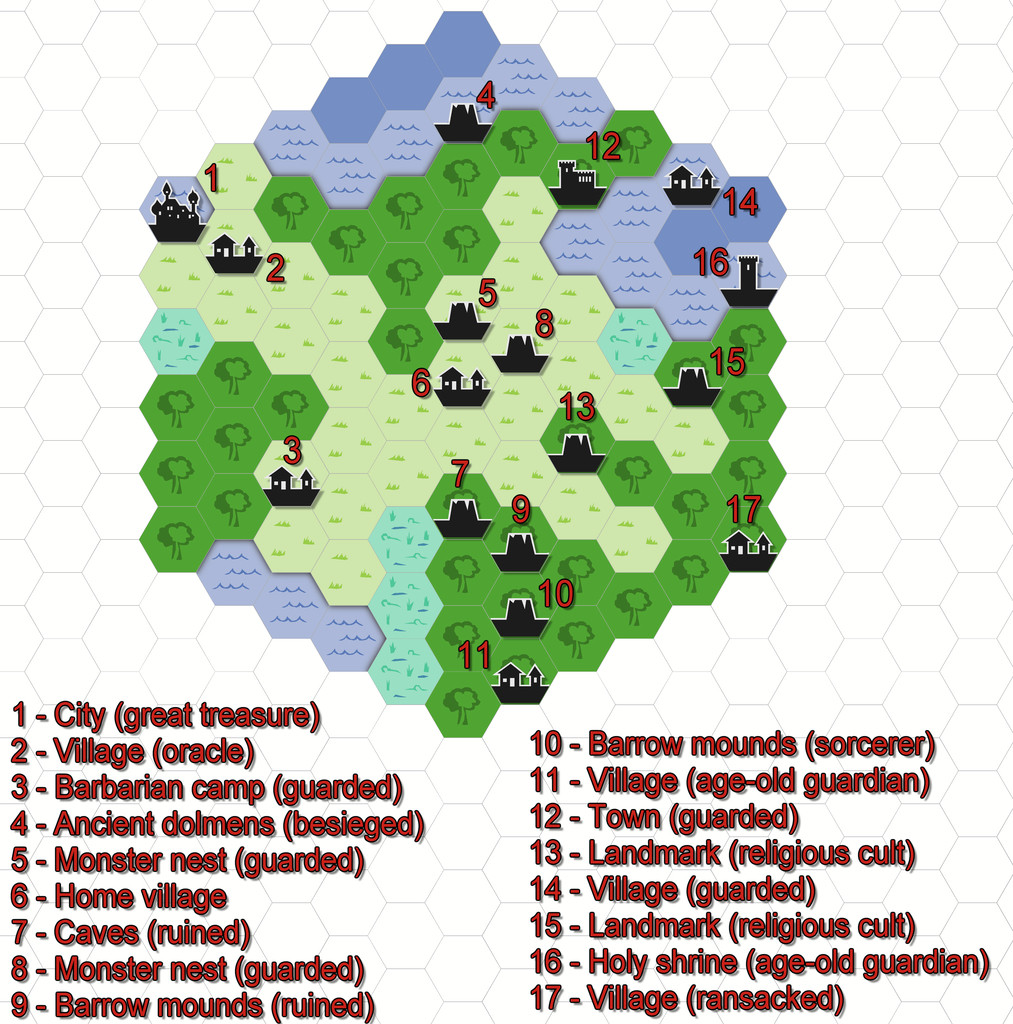
Wyvern
Wyvern
About
- Username
- Wyvern
- Joined
- Visits
- 3,151
- Last Active
- Roles
- Member
- Points
- 5,380
- Rank
- Cartographer
- Badges
- 24
-
Live Mapping: Hilltop Fort 1
Must admit, I was getting slight déjà vu feelings watching Ralf's livestream yesterday, as parts of it reminded me of my Wyvern Citadel maps for the Community Atlas. Very different scale of course, but there are inevitable similarities for drawing anything set on a craggy hilltop in this kind of more realistic style.
I made much more use of symbols however, rather than drawn polygons, for the cliffsides, though I did experiment that way originally (see this post in my Forum notes on the Citadel map, while still in progress). Just couldn't get the bevelled polygons to look right though, so switched to a technique developed for battlemat cliffs by another of our resident mapping experts, Shessar, as described via the Forum post here. As ever with CC3 mapping, there are always different methods to try!
Looking forward to Part 2 of this video, to see how it all develops. Anyone would think Ralf was running a game set in Middle Earth...😉
-
Community Atlas: Dendorlig Hall - A Sort-Of D23 Dungeon for Nibirum
Well, this comes after a rather longer gap than I'd expected! However, progress has been continuing with this map throughout, if at a slower and much more intermittent pace than previously. Unsurprisingly, six months after the start, quite a number of folks who embarked on the D23 concept in January are either also finding problems and delays, or have abandoned the project entirely, so some ongoing progress is a positive note at least.
My scrawled notes have now got up to area 271, although getting them typed-up has slipped back further, as I'm currently only up to starting area 211 with those. It is, of course, always much easier to add a few jottings to a piece of paper in a few spare minutes than to have to set up the wpc on the computer, type, check and correct stuff that can be deciphered from said handwritten notes, often written many weeks earlier!
The map continues to receive small changes, and at some point I really must remember to add a key and a title to it... However, in honour of this Solstice update, let's start with an overview of the current state of the entire map:
From which it's clear that tweaking of label placement continues, along with amendments to the appearance of the map, albeit for the labelling, only in areas for which the type-up has been completed still. The enlarged numerals, while now easier to read overall (at a higher-res than is suitable for the Forum, at least), have needed moving off their rooms entirely at times for clarity of map details. Area 210 has even had to have an indicator line added, so things still look OK on that bit of the map. That's the hidden entrance room to the old Thieves' Guild, also known as Toad Hall, incidentally. You'll have to wait to find out why though, as for today's closer examination, I thought we'd head into the more upmarket part of the Hall (or what was, when it was still occupied, at least), Khy Row (167-190):
Why Khy Row? Well... When I was looking over the randomly-appointed features for the various rooms here, I thought one should be a bazaar. So it became the Old Bazaar (170); and for those who may not know, or recall, there was an old British Music Hall style song, "In the Old Bazaar in Cairo" 😁.
For those undeterred by such awfulness, 😉, these are the PDF notes extracted from the full document just for this part of the Hall:
Hopefully not quite so long a delay for the next update, though after what's happened lately, I make no promises!
-
Community Atlas: Dendorlig Vale, Malajuri
It's been a while! However, I've completed the PDF notes for this map now, have made a couple of minor tweaks to it, and have now submitted it for the Atlas.
This is the final map version (larger version updated in my Gallery too):
And this is the descriptive PDF:
Although I had fairly clear ideas of what features were going to be where in this small area, some additional elements were added randomly from a new paid-for product available on DriveThru RPG by Atelier Clandestin, called "Sandbox Generator". While this allows the construction of entire regional or larger hex maps, together with many items that may be found in such areas, including settlements and dungeons suitable for a low-magic, more-or-less pseudo-feudal, world, I chose just a few of the more interesting "decorative aspect" tables, plus one or two from the settlement options, to spice-up some of the places in the Vale. Not everything rolled made it into the final notes of course, as not everything randomly-selected always fits well enough. This seems to be an interestingly detailed system, even if I was only able here to test a few parts of it. Long a fan of trying-out random systems, as I may have mentioned on the Forum previously 😉 .
In case anyone's wondering, I have been continuing with the write-up for the large Dendorlig Hall subterranean map as well, although other things (including this map's notes!) have slowed progress there over the last couple of months. Hopefully though, I'll have an update for that too shortly.
-
Hexcrawling starter maps
There's an obvious couple of problems here. One is there isn't a great enough diversity of symbols to cover even the fairly small range of non-settlement features that might be useful, and which only an expansion of the style (either by PF or personally) would solve. [There is a further issue here too, in that none of the location symbols actually work to the standard snap grids used in this Annual. I'm not sure if that may have been amended since I downloaded my copy, however. I ended up having to place most by eye alone, certainly.]
The other is that anything placed in a coastal hex looks as if it's really in the sea, because that's just how hex maps of this sort work. That though is something I could resolve. Plus as I'd been randomly rolling terrain up, I'd noticed there was no "Hills" option in the current ShadowDark tables, so decided to tweak that a little to include some.
So the maps, and additional keyed terrains, came to look like this:
All I did for the coasts was add a small section of land from each adjacent hex over the coastal sea.
-
Hexcrawling starter maps
Just to make sure I'm not leaving anyone behind here, some brief explanation. From the early days of RPGs, those running the games have been encouraged to design areas for the players to explore, frequently using random generation systems to do so. "Hexcrawling" is the overland version of this, where each hex represents a fixed distance (if sometimes a little vaguely defined, given a hexagon is not the same size from its centre all around), commonly 5 or 6 miles, though larger or smaller sizes than this are not infrequent. What are now called "Old School Rules" (OSR) RPG systems often make use of this technique, and these have seen a particular upsurge in popularity this year, following ongoing problems from the current owners of "Dungeons & Dragons".
One of the unexpectedly phenomenal successes of recent times in the OSR line has been a new RPG called "ShadowDark", which presents a very streamlined update on the OSR theme, that incorporates improvements from modern RPGs more generally. I've been very taken with the whole ShadowDark RPG conception, particularly as the Core Rules include everything needed to play the game, such as a random generation system for hexcrawls.
Last weekend, I did a couple of small test areas, to see how the system worked (hexes here are 6 miles in size), and although the system which will appear in the printed Core Rules has been tweaked a little since then, I prepared the maps in CC3+ through the week, to see how they'd look, using the 2010 Overland Hex style. These are the basic maps as generated by the random system rolls, with a list of their contents, and a separate key:






